I spent this past weekend at the coast, travelling to Arcata for a Northern California Audubon Council meeting hosted by the Redwood Region Audubon Society. This area includes Arcata Marsh and Wildlife Sanctuary, part of Audubon’s Humboldt Bay Important Bird Area (IBA).
The Arcata Marsh is an innovative wastewater treatment facility consisting of 307 acres of freshwater marshes, salt marsh with tidal slough, grassy uplands, tidal mudflats, brackish marsh, 5.4 miles of walking and biking paths and an Interpretive Center that serve over 150,000 visitors every year1. You can see the list of the more than 270 bird species observed throughout the year at the marsh, along with their frequency and time of year seen here.
By integrating its conventional wastewater treatment with the natural treatment processes of constructed wetlands, Arcata has succeeded in turning its treated wastewater into an incredible resource, a plan which has since been embraced by many other cities around the world.
Heading west on highway 255 around the north end of Arcata Marsh and Wildlife Sanctuary, we drove to the Humboldt Bay jetty in search of the Rock Sandpiper (Calidris ptilocnemis). Unfortunately, we were a tad early. It seems that the Rock Sandpiper doesn’t usually show up until November if they show up at all.
Among the several species we did see on the jetty however, is the Black Turnstone (Arenaria melanocephala). Click on photos for full sized images.
The Black Turnstone is strictly a West Coast phenomenon. They are a colonial breeder, nesting only in western Alaska, on a narrow band of coastal sedge meadows2.
They leave their breeding grounds in early summer to move down the coast, some travelling as far south as the Gulf of California.
As their namesake suggests, Black Turnstones use their uniquely shaped bill to flip and turn anything that might be concealing prey beneath. On the exposed rocks in the wave splash zone of the jetty they were digging under seaweed and occasionally pecking at barnacles or mussels.
httpv://youtu.be/emxWyBAvTPQ
The following day we also observed several Black Turnstones on the eastern side of Humboldt Bay around the Eureka public fishing pier.
These birds were not only flipping over seaweed to find prey but probing the soft mud for invertebrates.
This beautiful shorebird is on Audubon’s Watchlist because of its susceptibility to catastrophes on its limited breeding grounds.
Of course, all birds in these photos are in non-breeding plumage. During breeding season the Black Turnstone shows upperparts of brownish black with dark greenish-bronze iridescence to the crown and back. There is a large white spot between the bill and eye with fine white streaks on the crown and cheeks, and large white flecks on the breast and a narrow white supercilium. The belly, undertail-coverts, back and rump, base of tail, and stripe along the wing are white2.
References: 1Friends of the Arcata Marsh, 2Birds of North America Online


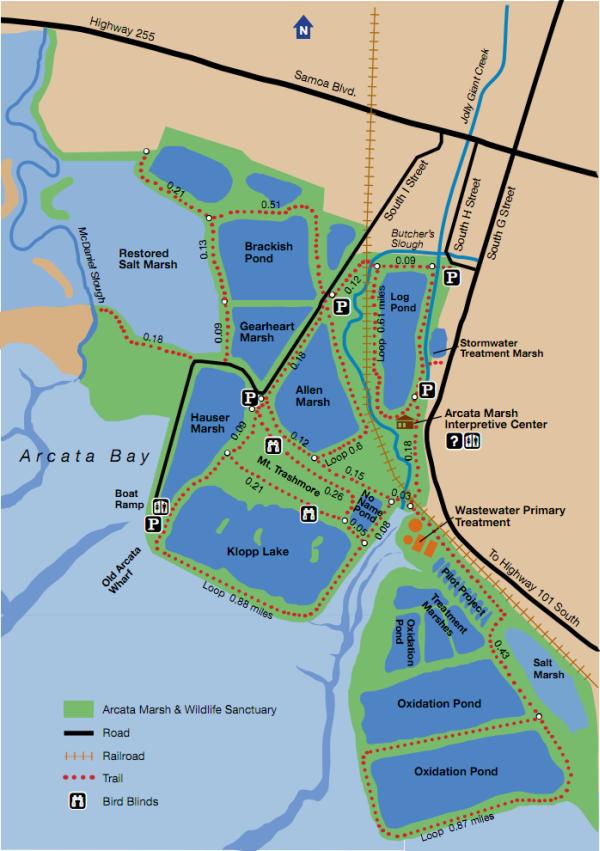
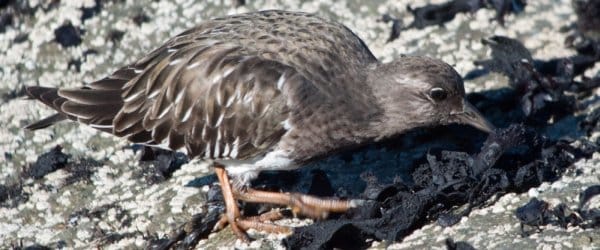
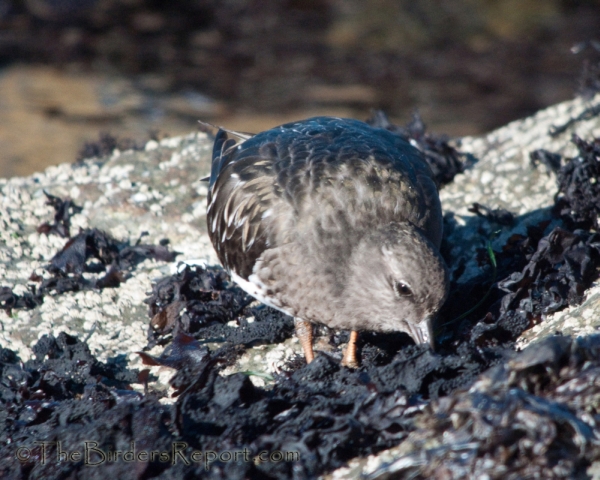
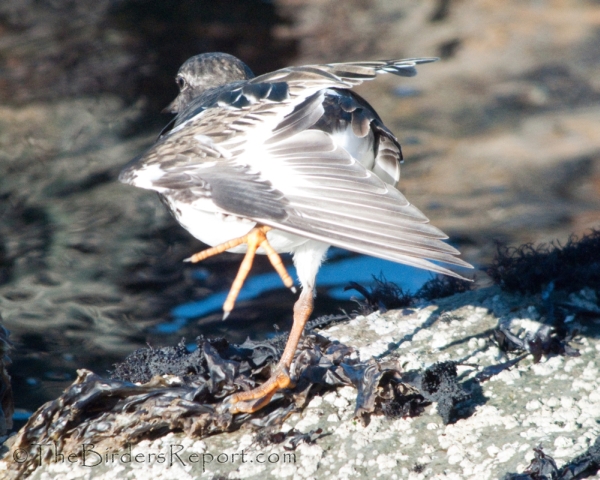
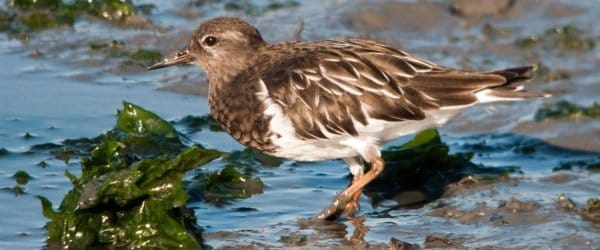
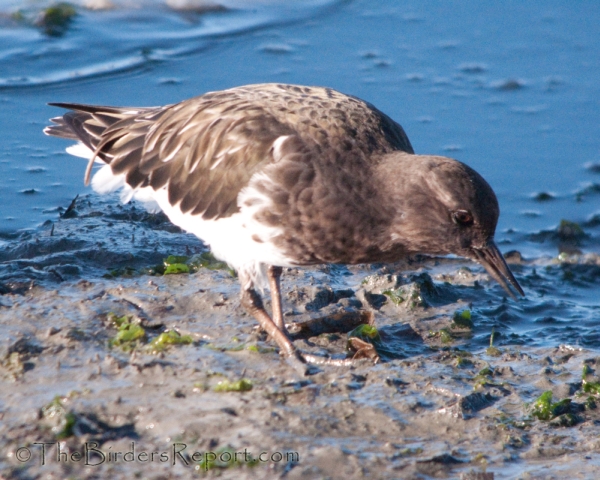
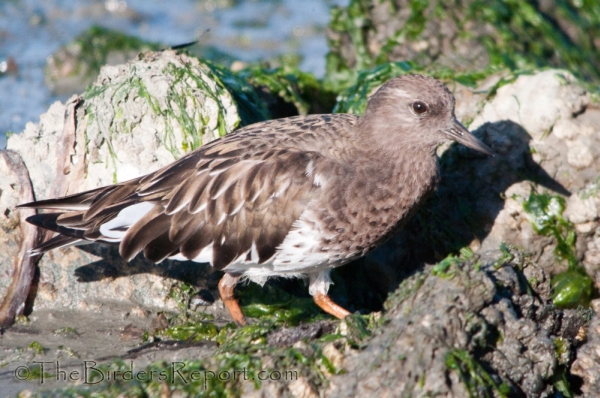











I didn’t note any Black Turnstones when I went there (I may just not have written them down since they are the commonest shorebird on the Farallones), but I did get my lifer Long-billed Curlew, White-tailed Kite, House Wren and American Goldfinch there.
I love the name Mt. Trashmore!
@Duncan there were plenty of Long-billed Curlews to see and we saw another 40 species in our one hour walk before the meeting. I added to that list having spent the previous day there and birding the coast after the meeting. It’s always nice to visit a place that has recorded 270 species!
@Mike yea, pretty funny. That is the site of the old dump. It is truly amazing what they have done with that property, turning it from a dump into a world class, environmentally friendly, marsh/sewage treatment plant. Engineers from Japan have visited the Arcata Marsh to learn the biological and ecological technology to build similar plants over there.